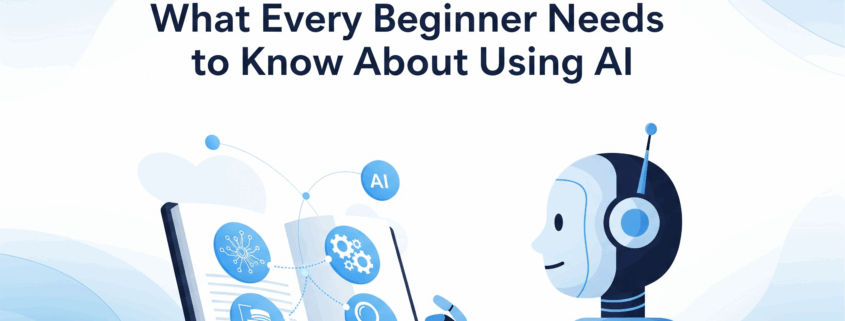What Every Beginner Needs to Know About Using AI
Artificial intelligence (AI) has moved from science fiction to everyday reality. It's now integrated into countless tools and services we use daily, from the recommendation algorithms on streaming services to the voice assistants in our phones. For a beginner, diving into this new world can feel overwhelming, but with a few core concepts and a responsible approach, you can harness its power to boost your productivity and creativity.
1. AI Is a Tool, Not a Mind
The first thing to understand is that AI, in its current form, is a sophisticated tool. It's not a sentient being with its own thoughts or consciousness. AI systems are trained on massive datasets and use algorithms to recognize patterns and make predictions or generate content. Think of it as a super-powered calculator, a tireless assistant, or an incredibly well-read research librarian. Its output is only as good as the data it was trained on and the instructions you provide.
2. Learn to “Prompt” Effectively
The key to getting useful results from AI is learning to communicate with it. This is often referred to as “prompting.” The more specific and detailed your prompt, the better the output will be.
3. Fact-Check Everything
A critical rule of thumb for any beginner is to always fact-check information provided by an AI. AI models can sometimes “hallucinate,” meaning they generate plausible-sounding but completely incorrect information. This is because they are built to predict the next most likely word or data point, not to verify truth. For any important information, statistics, or public-facing content, always verify the details from a trusted, independent source. Many AI tools will even provide citations or links to the sources they used to help with this process.
4. Understand the Ethics of AI
As you begin to use AI, it's important to consider the ethical implications. Issues like bias, privacy, and accountability are central to the conversation around AI. Since AI models are trained on historical data, they can inherit and even amplify biases present in that data. Be aware of the potential for biased outcomes and use AI responsibly. Additionally, be mindful of the data you input. Don't share sensitive personal or proprietary information without understanding how the AI provider handles data privacy and security. The goal is to use AI to augment human intelligence and creativity, not to replace it entirely.
5. Start with Free and Accessible Tools
The best way to get comfortable with AI is to start using it. There are numerous free and user-friendly tools available. Tools like ChatGPT, Claude, and Gemini are great for generating text, brainstorming ideas, or summarizing documents. For image generation, you can explore services like DALL-E, which is integrated into many platforms. Simply playing around with these tools will help you understand their capabilities and limitations.
The age of AI is here, and embracing it is a valuable step for anyone looking to stay relevant in an evolving world. By approaching AI with a basic understanding of what it is, how to use it effectively, and a solid grasp of its ethical considerations, you can unlock a powerful new way to work and create.





